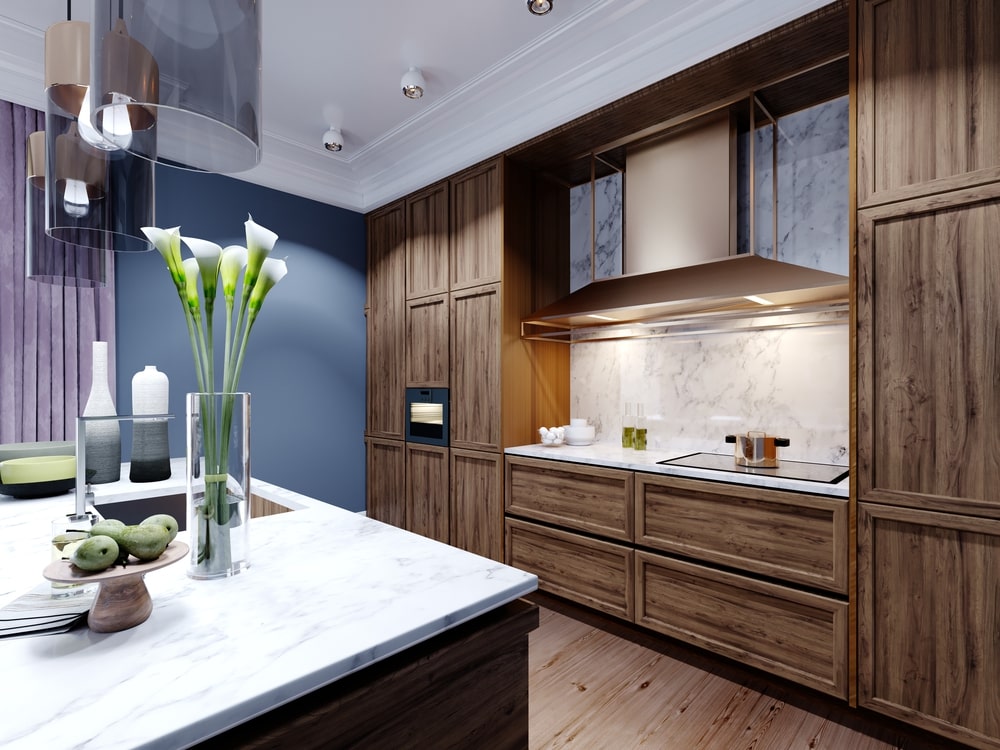Understanding Staining Cabinet Grade Plywood

Cabinet grade plywood is a popular choice for building cabinets and other furniture because it’s strong, durable, and relatively inexpensive. It’s also a good choice for staining because it has a smooth surface that allows for a consistent finish.
Characteristics of Cabinet Grade Plywood, Staining cabinet grade plywood
Cabinet grade plywood is specifically designed for applications where aesthetics are important. This type of plywood features a smooth, consistent surface, making it suitable for staining. The veneers used are carefully selected for their grain patterns and color uniformity, resulting in a visually appealing finished product.
Wood Veneers in Cabinet Grade Plywood
Cabinet grade plywood typically uses veneers from various hardwood species. Some common choices include:
- Oak: Oak is a popular choice for cabinet grade plywood because it’s strong, durable, and has a beautiful grain pattern. It stains well and accepts a wide range of finishes.
- Maple: Maple is another popular choice for cabinet grade plywood because it’s hard, dense, and has a fine, even grain. It takes stains well and can be finished to a high gloss.
- Cherry: Cherry is a beautiful wood with a reddish-brown color that deepens over time. It stains well and has a rich, warm tone.
- Walnut: Walnut is a luxurious wood with a distinctive dark brown color and a bold grain pattern. It stains well and has a rich, elegant appearance.
Factors Influencing Stained Finish
Several factors influence the final stained finish on cabinet grade plywood:
- Wood Grain: The grain pattern of the veneer can affect how the stain is absorbed. For instance, a tight, closed grain will absorb stain more evenly than an open grain.
- Porosity: The porosity of the veneer affects how much stain is absorbed. A more porous wood will absorb more stain, resulting in a darker finish.
- Moisture Content: The moisture content of the plywood can affect how the stain is absorbed. If the plywood is too dry, the stain may not penetrate as deeply, resulting in an uneven finish. Conversely, if the plywood is too wet, the stain may not dry properly, leading to blotching or streaks.
Preparing Cabinet Grade Plywood for Staining: Staining Cabinet Grade Plywood

Prepping cabinet grade plywood for staining is like getting ready for a big night out – it needs the right touch-ups to look its best. Think of it as giving your plywood a makeover before it shines in its final form.
Sanding Cabinet Grade Plywood
Sanding is crucial for achieving a smooth and even surface for staining. It removes any imperfections and allows the stain to penetrate evenly, creating a uniform finish.
- Start with a coarse grit sandpaper (80-120 grit): This removes any major imperfections, like rough edges or uneven surfaces. Think of it as the foundation for a flawless look.
- Progress to a medium grit sandpaper (150-220 grit): This helps to refine the surface and remove any scratches or imperfections left by the coarse grit. It’s like smoothing out the wrinkles for a more polished look.
- Finish with a fine grit sandpaper (220-400 grit): This creates a smooth, even surface that allows the stain to adhere evenly and prevents streaks or blotches. It’s the final touch that makes your plywood shine.
Cleaning Cabinet Grade Plywood
After sanding, it’s important to clean the plywood thoroughly to remove any dust or debris that could interfere with the staining process.
- Use a tack cloth: This is a sticky cloth that picks up dust and other particles. It’s like a magnet for dust, leaving your plywood clean and ready for the next step.
- Vacuum the surface: This removes any lingering dust or debris. Think of it as giving your plywood a final sweep before the big reveal.
Filling Gaps and Imperfections
If there are any gaps or imperfections in the plywood, it’s important to fill them before staining. This ensures a smooth and even surface for the stain to adhere to.
Choose a wood filler that matches the color and texture of the plywood.
- Apply the wood filler with a putty knife: Make sure to fill the gaps completely and smooth out the surface. Think of it as patching up any flaws for a perfect finish.
- Let the wood filler dry completely: This ensures it sets properly and doesn’t interfere with the staining process. Patience is key for a flawless look.
- Sand the filled areas: Once the wood filler is dry, sand it smooth with a fine grit sandpaper (220-400 grit). This blends the filler seamlessly with the surrounding plywood.
Staining Techniques for Cabinet Grade Plywood

Staining cabinet grade plywood is an essential step in achieving a beautiful and durable finish. The right stain can enhance the wood’s natural grain and color, adding depth and dimension to your project. However, choosing the right stain and applying it correctly is crucial to achieving the desired results. This section will explore different types of wood stains and provide tips for achieving a consistent and even finish.
Types of Wood Stains
The type of stain you choose depends on your desired outcome and personal preferences. Each type has its unique characteristics, advantages, and disadvantages.
- Oil-based stains are known for their deep penetration and rich color. They typically dry slowly, allowing for more time to work with the stain and achieve an even finish. However, oil-based stains are also known for their strong odor and potential for long drying times. They require a solvent, like mineral spirits, for cleanup, making them less environmentally friendly than other options.
- Water-based stains are a more environmentally friendly option compared to oil-based stains. They dry quickly, emitting fewer fumes and allowing for faster project completion. However, water-based stains tend to be less penetrating than oil-based stains, resulting in a lighter finish. They also require water for cleanup, which can make them less forgiving if not applied carefully.
- Gel stains combine the advantages of both oil-based and water-based stains. They have a thicker consistency, making them easier to control and preventing them from running on vertical surfaces. They also dry quickly and have a less strong odor than oil-based stains. However, gel stains can be more expensive than other options.
Applying Wood Stain
Even application is key to achieving a consistent finish. Here are some tips to help you apply wood stain evenly:
- Prepare the surface: Sand the plywood to remove any imperfections and create a smooth surface for the stain to adhere to.
- Use a quality brush or cloth: A natural bristle brush or a clean cloth is ideal for applying stain evenly. Avoid using foam brushes, as they can leave streaks.
- Work in thin coats: Apply thin, even coats of stain, allowing each coat to dry completely before applying the next. Overlapping coats can cause blotching or uneven color.
- Wipe away excess stain: After applying the stain, wipe away any excess with a clean cloth to prevent it from pooling and creating uneven color.
Using Stain Conditioners and Sealers
Stain conditioners and sealers play a crucial role in enhancing the final appearance and protecting the stained surface.
- Stain conditioners help to even out the absorption of stain, preventing blotching and creating a more consistent finish. They are especially useful when working with woods that have a lot of variation in grain, such as oak or maple.
- Sealers protect the stained surface from scratches, spills, and moisture. They also help to enhance the color and sheen of the stain. Common types of sealers include polyurethane, varnish, and wax.
Staining cabinet grade plywood can be a beautiful way to add warmth and character to your home. It’s a versatile material that can be used for a variety of projects, from simple shelves to elaborate built-ins. If you’re looking for a stylish and functional way to store your wine collection, consider building a gray wine bar cabinet.
With a little creativity and some careful sanding, you can create a stunning piece that will be the envy of your friends. And once you’ve mastered the art of staining plywood, the possibilities are endless!
Staining cabinet grade plywood can be a beautiful and cost-effective way to create a unique piece of furniture. For example, if you’re building a furniture corner bar cabinet , staining the plywood can give it a rich, warm look that complements the bar’s function.
The right stain can highlight the wood’s natural grain and bring out its beauty, creating a piece that’s both functional and visually appealing.